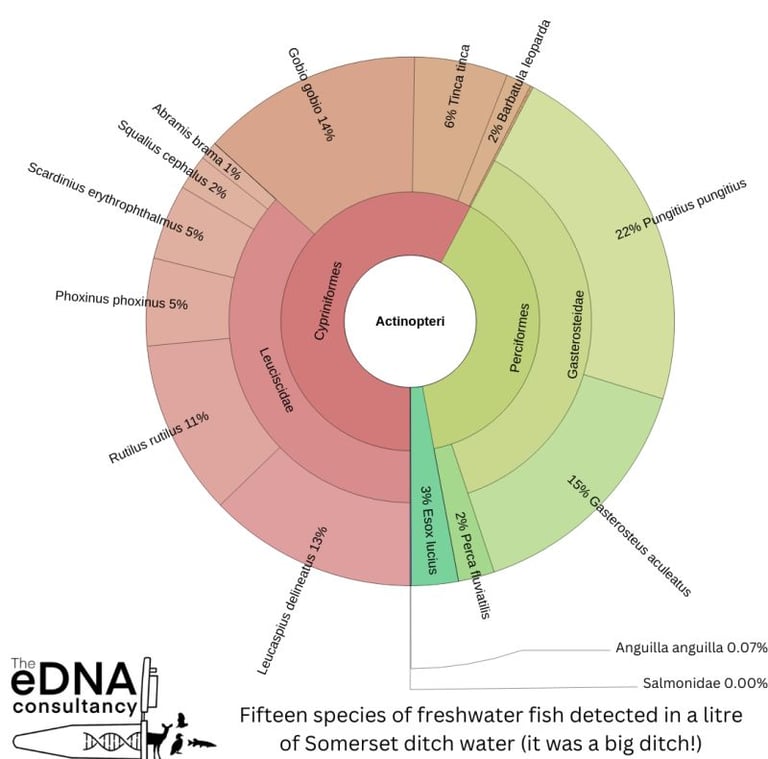
Fifteen species of freshwater fish detected in a litre of Somerset ditch water
eDNA metabarcoding analysis provides biodiversity information
EDNA SERVICESCONSULTANCY
Laura Weldon


Whilst we specialise in single species eDNA methods, we recognise that metabarcoding analysis offers significant potential for biodiversity monitoring across a wide range of taxa. Through this approach, we can capture a broader picture of ecosystem health and species distribution.
For instance, in one of our recent projects, we filtered a 1L water sample to analyse its eDNA content. The results were remarkable – we identified over 15 species of freshwater fish, demonstrating the sensitivity of metabarcoding to aquatic biodiversity.
Additionally, the analysis also revealed the presence of mammals and amphibians, including species such as the water vole (Arvicola amphibius) and smooth newt (Lissotriton vulgaris), both of which are often challenging to detect through traditional survey methods. This highlights the power of eDNA metabarcoding to offer a non-invasive, cost-effective means of monitoring species diversity across diverse ecosystems, and supports its application in conservation, habitat management, and environmental monitoring.
The eDNA Consultancy
Where our expertise meets yours
ADDRESS
Unit 4 & 5, Tanhouse Farm, Frampton on Severn, Gloucestershire, GL2 7EH, GB
INQUIRE ABOUT OUR SERVICES
Web design and graphics by Bear Bones
The eDNA Consultancy Ltd is registered in England and Wales 15508607. VAT no: 482885735 © Copyright The eDNA Consultancy Ltd. All rights reserved.
